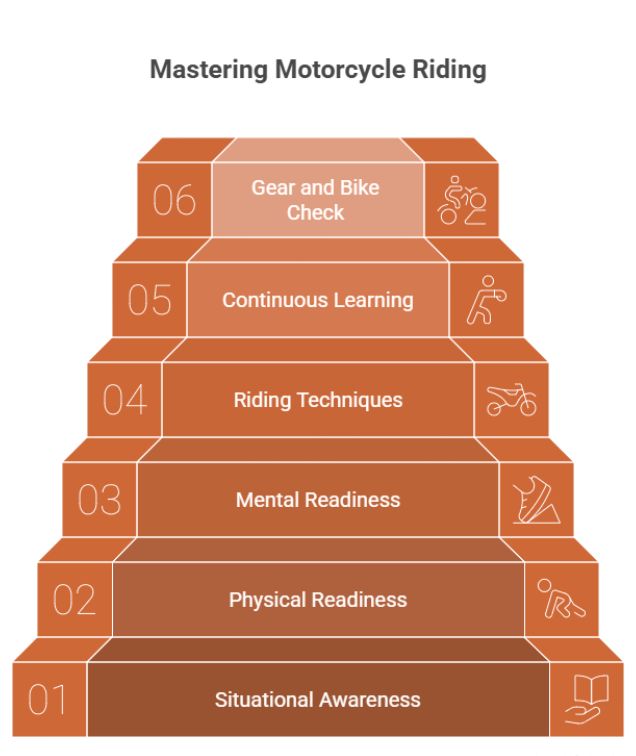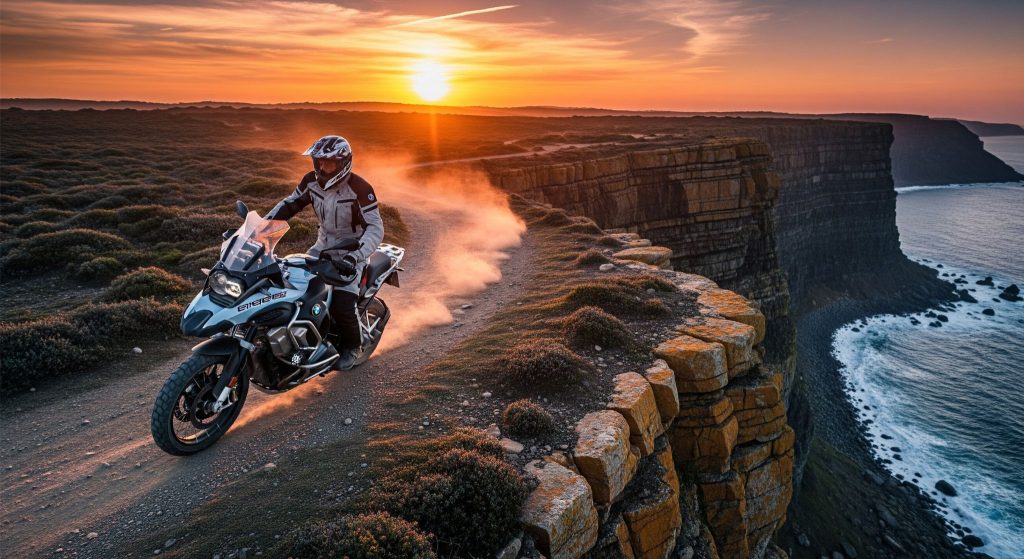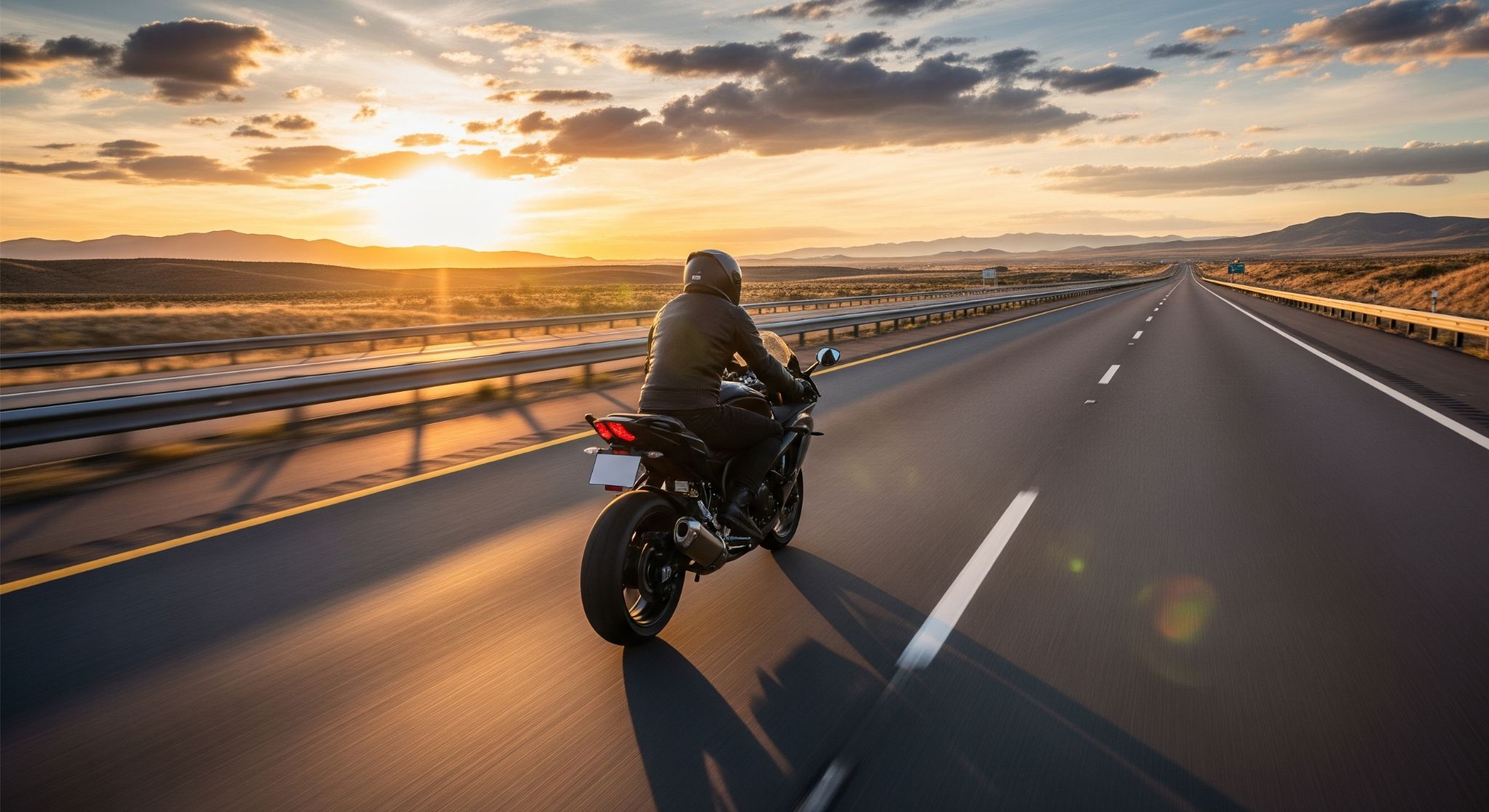What Makes a Rider “Good”?
Being a good rider isn’t just about control or horsepower. It’s about behavior.
Rider behavior affects safety more than raw skill. You might know how to ride fast, but if you ignore risks, you’re putting yourself and others in danger.
Good rider behavior means staying alert, being honest about your limits, and treating every ride like it matters. This blog breaks down the key traits: awareness, readiness, smart technique, and the right mindset.
Let’s start with one of the most important ones—situational awareness.

Situational Awareness
Stay in Your Body, Not in Your Head
Situational awareness is one of the most critical skills a motorcyclist can develop, according to Motorcycle Riders Hub. Staying present means tuning into your physical and mental state—how the bike feels under you, how alert you are, and what your instincts are picking up.
If you catch yourself thinking about work or yesterday’s ride, bring your attention back. Your awareness is your first layer of defense.
Always Scan the Road
Look ahead, not just in front of your wheel. Watch traffic, road signs, intersections, and blind spots.
A smart rider is always asking, “What’s next?” and “What could go wrong?”
If a car is creeping toward a stop sign, assume it might pull out. If a deer ran across the road once, watch for more.
Scanning gives you time to react before you need to panic.
Watch the Weather and Surface
Rain, gravel, or oil on the road can ruin your day fast.
Before you ride, check the weather. On the road, pay attention to dark patches, shiny spots, and loose gravel.
Adjust your speed and following distance. If it’s hot, your tires grip better. If it’s cold or wet, they don’t.
Good riders don’t wait for surprises—they watch for signs and change how they ride.
Physical and Mental Readiness
Eat Smart, Ride Smart
Your body fuels your brain. What you eat matters more than you think.
Avoid heavy meals before a ride—they can make you sluggish and dull your focus. Choose light, balanced foods that keep your energy up and your mind sharp. Hydration is just as important. Even slight dehydration can slow your reflexes and cloud your thinking.
Good riders treat their body like part of their gear—something that needs maintenance, too.
Don’t Ride Tired
Fatigue is sneaky. It creeps in and makes simple choices harder.
If you didn’t sleep well, if you’ve been on the road for hours, or if you feel foggy—pull over. Stretch. Rest. Drink water. Riding while tired is like riding impaired.
A good rider knows when to push through and when to pause. Staying sharp is more important than sticking to a schedule.

Attitude and Mindset
Ride with Respect
Good riders respect their limits, their bike, and everyone on the road.
That means no showing off, no pushing beyond your skill, and no assuming others will always follow the rules. Respect keeps you humble, focused, and safer.
Your bike isn’t just a machine—it responds to how you treat it. Ride it like it matters.
Learn from Mistakes
Everyone makes mistakes. Good riders learn from them.
If something goes wrong, don’t rush to blame others. Ask: What could I have done differently? Could I have spotted the hazard earlier? Braked smoothly? Picked a better line?
Owning your ride, even the bad moments, is what helps you grow.
Practical Riding Techniques
Balance and Throttle Control
These are your foundation. Balance keeps you upright. Throttle keeps you stable.
Get both right, and your bike feels solid. Get them wrong, and every ride becomes harder than it needs to be.
Practice starts and stops. Find your friction zone. Know how your bike reacts to inputs.
Smooth Is Safe
Jerky movements cause trouble. Smooth is predictable. Predictable is safe.
Ease into turns. Roll on the throttle gradually. Use both brakes with control. Keep your head up and eyes looking where you want to go.
The smoother you ride, the more control you keep.
Avoid Common Errors
Target fixation, panic braking, and poor lane position are common—and dangerous.
Train yourself to look past hazards, not at them. Brake progressively, not suddenly. And always think about where you are in the lane—don’t ride blind in a driver’s mirror.
Being aware of these habits makes it easier to break them.
Keep Learning
Keep Training, Even If You’re Experienced
No one knows everything. Even seasoned riders benefit from a refresher.
Courses like the BRC2 and ARC sharpen skills and build confidence, according to Montana Motorcycle Rider Safety.
Advanced courses teach new techniques, sharpen old ones, and break bad habits you didn’t know you had. They also give you a chance to practice in a safe setting.
The road keeps changing. Your skills should too.
Learn from Others
Riding with experienced friends or groups teaches you things no class can.
Ask questions. Watch how others handle tough turns or heavy traffic. Let them critique your riding—if they care, they’ll help you grow.
Good riders support each other.
Use Tools Like Journals and Videos
Record your rides. Write down what went well and what didn’t.
Watch helmet cam footage, either your own or from others, to spot habits you miss in the moment.
These small steps lead to big gains.
Respect Gear and Bike Condition
Gear Up Every Time
Helmet, gloves, jacket, boots, pants. Wear them—even on short trips.
Crash stats don’t care if you’re riding to the store or across the state. Gear won’t stop a crash, but it can make the difference between walking away or being carried off.
Do a Pre-Ride Check
Before every ride, do a quick check: tires, oil, lights, signals, brakes.
A small problem can turn big fast when you’re on two wheels. Keep your bike in good shape so you can stay in control.
It’s All About Consistency
Good rider behavior isn’t a one-time thing. It’s how you ride every time.
Stay alert. Ride smart. Respect your limits. Keep learning. Keep checking in with yourself and your bike.
The more consistent your good habits, the less you rely on luck. And that’s what makes a rider truly good.
Ready to Ride Smarter?
Whether you’re just starting out or have thousands of miles behind you, there’s always room to improve. Explore the Montana Motorcycle Safety Foundation blog for tips that help sharpen your skills and boost your confidence.

